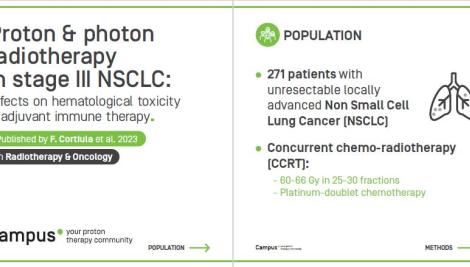Subtitle
Photon vs proton hypofractionation in prostate cancer: A systematic review and meta-analysis. This review.
Published in the Green Journal, this systematic review analyzed 160 studies of hypofractionated PT (n=11) or XRT (n=148) or PT+XRT (n=1) for localized prostate cancer. Acute GI toxicity was significantly worse among patients who underwent XRT than PT, being the corresponding proportions 7% (5% to 9%) and 2% (2% to 4%). With the moderate hypofractionated schedules, acute GI toxicity was significantly worse in the XRT group compared to PT group, being the corresponding proportions 9% (6% to 13%) and 2% (2% to 4%). There was no statistical difference between two groups in acute GI toxicity for ultra-hypofractionated schedules. Late GI toxicity was significantly worse among patients who underwent ultra-hypofractionated PT than XRT, being the corresponding proportions 7% (5% to 10%) and 4% (3% to 6%). There was no statistical difference in acute GU toxicity and overall late toxicity.
With moderate hypofractionation, there was statistical evidence that PT patients had better bRFS than those on XRT, for both intermediate-risk (97% vs. 90%; p < 0.0001) and low-risk (99% vs. 96%; p = 0.0368) patients. There was no difference in five-year b-RFS among patients scheduled on ultra-hypofractionated schedule. PT patients were systematically better than those on XRT, but no statistical difference, including at 5-year (i) clinical relapse-free survival of 93% PT and 88% XRT, p = 0.5383; (ii) prostate cancer-specific survival of 99% PT and 98% XRT, p = 0.4663; (iii) distant metastasis-free survival of 98% PT and 96% XRT, p = 0.4680.

